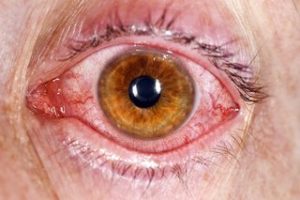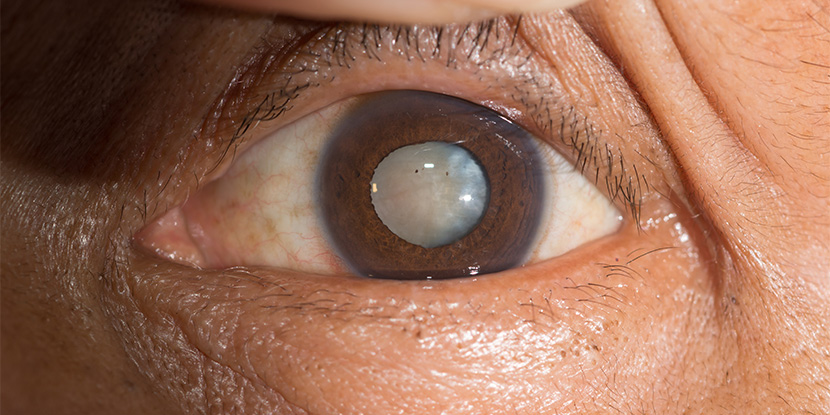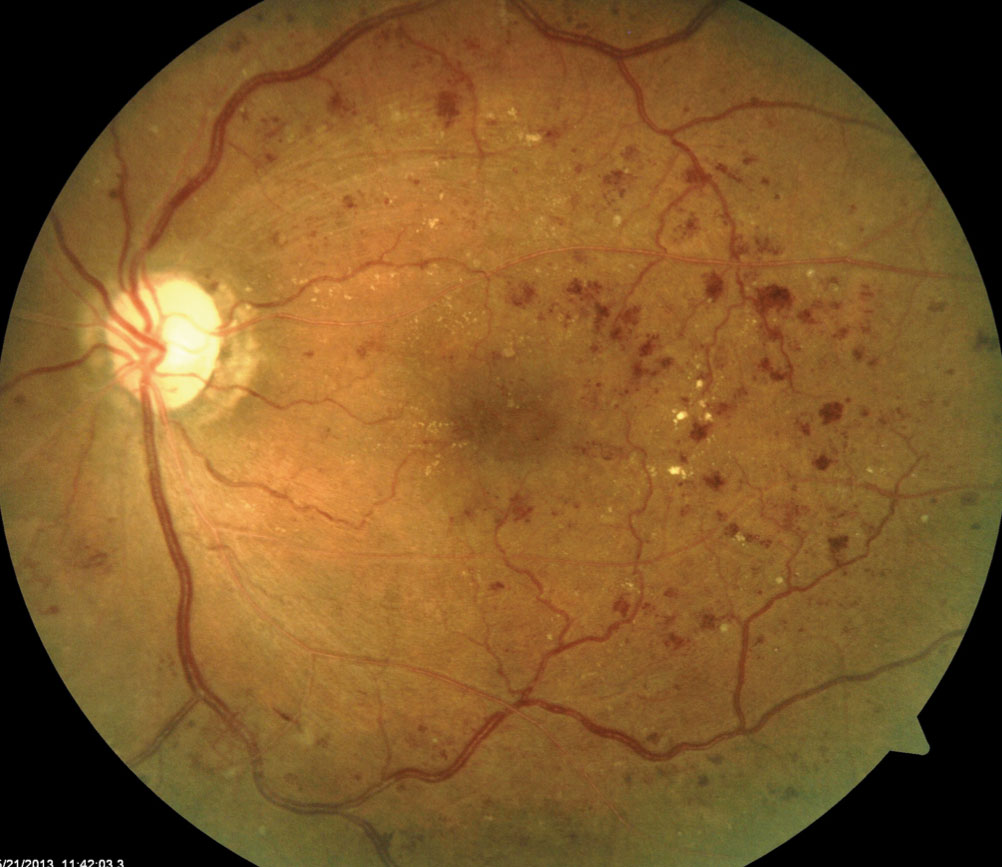10 common eye diseases (with photos)
Your eyes are some of your body’s most important assets. In a single glance they can recognise faces and places, alert us to potential danger, and so on. Hence maintaining the health of your eyes is critical.
Here are the top 10 most common eye diseases.
1. Acute conjunctivitis (‘pink’ or ‘red’ eye)

Conjunctivitis – also known as red or pink eye – is an inflammation of the transparent lining (conjunctiva)at the front of your eyeballs, and your eyelids.
It has several causes, including: infection (bacterial or viral), allergy (e.g. pollen), or chemical irritants (smoke, chlorine, lens solution, etc.).
2. Cataract

This is a cloudy, milky white lens in the eye. Most cataracts are age-related and more common in people over 50 (but can develop at any age).
Cataracts can be the result of injury, UV exposure, or protein deterioration over time. This is what causes the eye’s lens to cloud. If left untreated, cataracts can ultimately cause severe vision loss, and eventually blindness.
3. Dry eyes

The condition known as ‘dry eyes’ happens when tear glands cannot make enough tears or produce poor quality tears. Dry eyes can be uncomfortable, causing itching, burning, and in rare cases, some loss of vision.
4. Uveitis

Uveitis is a broad term for inflammation of one of the inside layers of your eye. It has many possible causes but is usually treatable.
Uveitis can be acute, recurrent, or chronic. Acute uveitis is characterised by rapid onset (over hours or days) and limited duration (≤3 months’ duration).
In recurrent uveitis, there are repeated episodes separated by disease inactivity ≥3 months, whether on or off treatment. Chronic uveitis is defined as persistent uveitis (>3 months’ duration).
There are many causes:
- Autoimmune conditions: Multiple sclerosis, ankylosing spondylitis, sarcoidosis, and Behçet’s disease.
- Infections: Herpes simplex virus, the herpes zoster virus (shingles), toxoplasmosis, syphilis, tuberculosis, Lyme disease, and cytomegalovirus..
- Medications: Some glaucoma drops and cancer immunotherapy.
- Eye injuries: Eye injuries or operations.
- Immune reaction: The body’s immune system may react against tattoo ink.
- Juvenile Idiopathic Arthritis (JIA): This is the most common identifiable cause of uveitis in children.
- Idiopathic (unknown).
All types of uveitis are potentially blinding conditions and should be referred to and managed by an experienced ophthalmologist (eye doctor).
5. Diabetic retinopathy

Diabetic retinopathy occurs as a result of prolonged high blood sugar associated with Types 1 and 2 diabetes; and can cause blindness if left untreated.
6. Keratoconus

Normally, the cornea (the clear outer lens of the eye) has a dome shape, like a ball. Sometimes, however, the collagen that holds the cornea in place becomes weak, causing the cornea to become cone shaped. This condition is called keratoconus.
It can cause serious loss of vision if not treated early and quickly. Left untreated, many people will need a cornea transplant.
7. Age-related macular degeneration (AMD)
Also known as senile degeneration of macula (SDM).

This leading cause of blindness is characterised by damage to the macula, the area of the retina that perceives light. Risk factors include: age, smoking, female gender, and family history. Unfortunately, there is no known cure for macular degeneration. However, current treatments can slow the progression of the disease.
8. Myopia

Myopia is the medical name for nearsightedness, which means that you can see objects that are near clearly, but have difficulty seeing objects that are farther away.
It happens when the eyeball grows too long from front to back, or when there are problems with the shape of the cornea (clear front layer of the eye) or lens (an inner part of the eye that helps the eye focus).
The most common forms of treatment are glasses, contact lenses, and surgery.
9. Glaucoma

Glaucoma is a condition that causes damage to the eye’s optic nerve and worsens over time. It is caused by a buildup of pressure inside the eye, glaucoma tends to be inherited, and may not show up until later in life.
The increased pressure, called intraocular pressure, can damage the optic nerve, which transmits images to the brain. If damage to the optic nerve from high eye pressure continues, glaucoma will cause permanent loss of vision.
Because most people with glaucoma have no early symptoms or pain from this increased pressure, it is important to see your eye doctor regularly so that glaucoma can be treated before long-term visual loss occurs.
10. Presbyopia

Presbyopia is the loss of the ability to clearly see close objects or small print. Presbyopia occurs when the natural lens in the eye loses flexibility. It is part of the natural ageing process of the eye.
Other eye diseases
Retinal detachment

Retinal detachment is a serious eye condition that occurs when the retina pulls away from the back of the eye. The retina, the light-sensitive tissue lining the back of the eye, separates from the underlying layer of support tissue. Symptoms include floaters, flashing lights, blurred vision, or a dark shadow in your vision.
Floaters
Common among people over 50 years, floaters are tiny spots or specks that float across the field of vision. Formed by a deposit of protein drifting about in the vitreous (the clear, jelly-like substance that fills the middle of the eye), floaters seem to drift in front of the eye but do not block vision.
Usually not serious, floaters can sometimes indicate a more serious eye problem such as retinal detachment, especially if they are accompanied by light flashes.
If you notice a sudden change in the type or number of spots or flashes you see, see your doctor as soon as possible.

